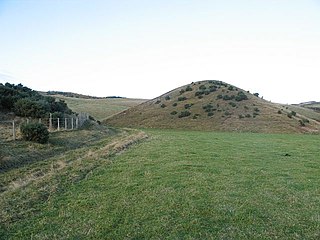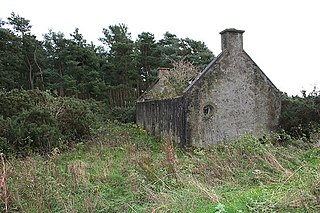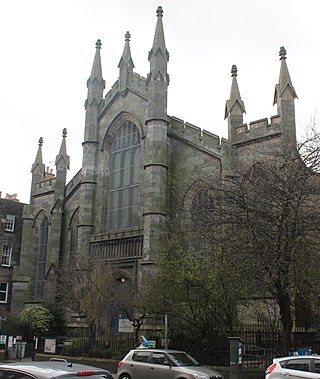Related Research Articles

Suede is a type of leather with a fuzzy, napped finish, commonly used for jackets, shoes, fabrics, purses, furniture, and other items. The term comes from the French gants de Suède, which literally means "gloves from Sweden". The term was first used by The Oxford English Dictionary in 1884.

Lamb, hogget, and mutton, generically sheep meat, are the meat of domestic sheep, Ovis aries. A sheep in its first year is a lamb and its meat is also lamb. The meat from sheep in their second year is hogget. Older sheep meat is mutton. Generally, "hogget" and "sheep meat" are not used by consumers outside Norway, New Zealand, South Africa, Scotland, and Australia. Hogget has become more common in England, particularly in the North often in association with rare breed and organic farming.

Kebab, kabob, or kebap or kabab is roasted meat that originates from the Middle East but has been popularised by Iranian cuisine & Turkish cuisine. Many variants of the category are popular around the world, including the skewered shish kebab and the doner kebab with bread.

A kame, or knob, is a glacial landform, an irregularly shaped hill or mound composed of sand, gravel and till that accumulates in a depression on a retreating glacier, and is then deposited on the land surface with further melting of the glacier. Kames are often associated with kettles, and this is referred to as kame and kettle or knob and kettle topography. The word kame is a variant of comb, which has the meaning "crest" among others. The geological term was introduced by Thomas Jamieson in 1874.
Folk etymology is a change in a word or phrase resulting from the replacement of an unfamiliar form by a more familiar one. The form or the meaning of an archaic, foreign, or otherwise unfamiliar word is reinterpreted as resembling more familiar words or morphemes.
Sir Andrew Barton was a Scottish sailor from Leith. He gained notoriety as a privateer, making raids against Portuguese ships. He was killed in battle and memorialised in English and Scottish folk songs.
A bogle, boggle, or bogill is a Northumbrian and Scots term for a ghost or folkloric being, used for a variety of related folkloric creatures including Shellycoats, Barghests, Brags, the Hedley Kow and even giants such as those associated with Cobb's Causeway. They are reputed to live for the simple purpose of perplexing mankind, rather than seriously harming or serving them.
William Scheves was the second Archbishop of St. Andrews. His parentage is obscure, but he was probably the illegitimate son of a royal clerk, John Scheves. Sixteenth-century accounts claim he spent several years abroad and studied at the University of Louvain. He spent several years at the University of St Andrews as an administrator. In his earlier ecclesiastical career, he had been clericus regiae and master of the hospital of Brechin. In 1474 he was provided unsuccessfully to the Archdeaconry of Dunblane, but by the beginning of 1477 he was Archdeacon of St Andrews and coadjutor (successor) and vicar-general of the archdiocese. After the deposition of Archbishop Patrick Graham in 1478, he succeeded to the archbishopric, apparently receiving the papal pall while in the presence of King James III and many of the nobility at Holyrood.

But and ben is an architectural style for a simple building, usually applied to a residence. The etymology is from the Scots term for a two-roomed cottage. The term describes a basic design of "outer room" conjoined with "inner room" as a residential building plan; the outer room, used as an antechamber or kitchen, is the but, while the inner room is the ben. The word but, here, comes from Early Scots/Middle English "bouten" "outside", and ben from ES/ME "binnen", "inside".
The Actes and Deidis of the Illustre and Vallyeant Campioun Schir William Wallace, also known as The Wallace, is a long "romantic biographical" poem by the fifteenth-century Scottish makar of the name Blind Harry, probably at some time in the decade before 1488. As the title suggests, it commemorates and eulogises the life and actions of the Scottish freedom fighter William Wallace who lived a century and a half earlier. The poem is historically inaccurate, and mentions several events that never happened. For several hundred years following its publication, The Wallace was the second most popular book in Scotland after the Bible.
Nationality words link to articles with information on the nation's poetry or literature.
Nicneven,Nicnevin or Nicnevan is a witch or fairy queen from Scottish folklore. She is often said to be the same figure as the Gyre-Carling or Hecate, but some scholars disagree with this. It is debated whether the name originally referred to a real woman or a mythical goddess.
Dulcarnon or dulcarnoun is a term used in the Middle English poem Troilus and Criseyde by Geoffrey Chaucer, in a line given to Criseyde: "at dulcarnoun, right at my wittes ende". It became proverbial. The etymology is from an Arabic phrase dhū-al-qarnayn meaning "two-horned", and the term was in use in medieval Latin.

Moubray House, 51 and 53 High Street, is one of the oldest buildings on the Royal Mile, and one of the oldest occupied residential buildings in Edinburgh, Scotland. The façade dates from the early 17th century, built on foundations laid c. 1477.
Isobel Hoppar or Hopper was a Scottish landowner and governess of Margaret Douglas. She was a powerful political figure in Scotland during the youth of King James V, and her wealth and influence attracted misogynous comment from her faction's enemies.
Andrew Halyburton or Haliburton was a Scottish merchant.

The Southside Community Centre is a community centre in the Southside, Edinburgh, Scotland, United Kingdom. The centre opened in 1986 and occupies the former Nicolson Street Church, which was completed in 1820.

The blue bonnet was a type of soft woollen hat that for several hundred years was the customary working wear of Scottish labourers and farmers. Although a particularly broad and flat form was associated with the Scottish Lowlands, where it was sometimes called the scone cap, the bonnet was also worn in parts of Northern England and became widely adopted in the Highlands.
Jerome, Hieronimo, or Girolamo Frescobaldi was an Italian financier and textile merchant based in Bruges. He supplied luxury goods to the Scottish court and was described as a "very good friend to the King of Scots". The Frescobaldi family and company, based in Florence, were involved in artistic commissions in England and Scotland. Jerome Frescobaldi was involved in the wool trade with Tommaso Portinari and his sons, and marketed spices obtained by Portuguese traders.
James Hommyll, was a wealthy merchant in Edinburgh.
References
- 1 2 3 Jamieson, John (1867). Jamieson's Dictionary of the Scottish Language: In which the Words are Explained in Their Different Senses. William P. Nimmo. p. 217.
- 1 2 Löfvenberg, Mattias Teodor (1946). Contributions to Middle English Lexicography and Etymology. C.W.K. Gleerup. p. 19.
- ↑ Colange, Leo de (1881). The American Encyclopaedia of Commerce, Manufactures, Commercial Law, and Finance. Estes & Lauriat. p. 424.
- ↑ Löfvenberg, Mattias Teodor (1946). Contributions to Middle English Lexicography and Etymology. C.W.K. Gleerup.
- 1 2 Halyburton, Andrew (1867). Ledger of Andrew Halyburton, Conservator of the Privileges of the Scotch Nation in the Netherlands, 1492-1503: Together with The Book of Customs and Valuation of Merchandises in Scotland, 1612. authority of the Lords of the treasury under the direction of the lord clerk-register of Scotland : Her Majesty's General Register.